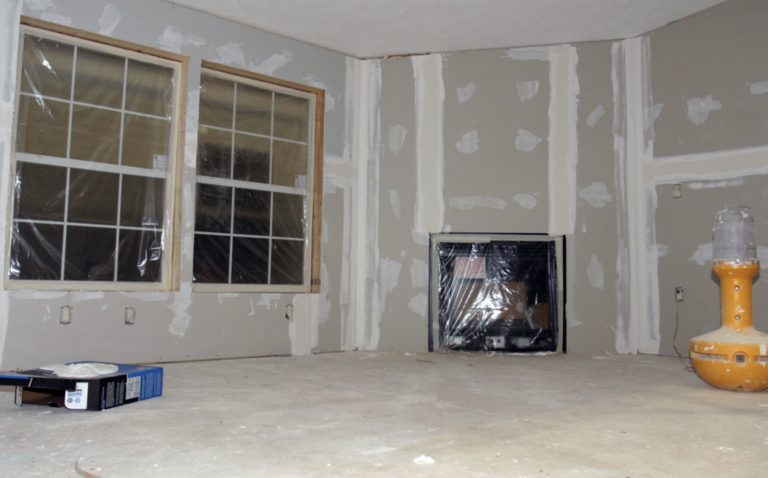Drywall is a considerably heavy, unwieldy, and large construction material. Consider purchasing an inexpensive drywall lift that will enable you to the hold drywall sheets without twisting your arms.
While you can install drywall independently, the task can be a lot easier if you have someone to help you, particularly if you want to cover the ceiling. Here are some tips to consider when you install and hang drywall:
Story Stages
1. Take Measurements
When hanging bottom sheets, cut your drywall to fit around plumbing rough-ins and electrical j-boxes. Measuring from right to left will help you know the horizontal measurement on the walls. For a vertical dimension, measure starting from the bottom to the top.
2. Avoid Force Fitting an Outlet
It might be tempting to attach your drywall to framing before you trim an outlet opening. However, outlet holes usually don’t fit, and you will need to trim the corners as much as you can.
Although, this might result in broken drywall around the outlet or box that will need maintenance later. Ensure you double check the fit before you install the drywall.
Properly cut the opening in the drywall sheet and use construction adhesives to meet your project requirements. When you have gotten the correct fit, consider fastening the sheet with screws.
3. Leave an Outlet for Your Electrical Switches
When installing and hanging drywall in the house, consider leaving a cutout in the walls for outlets and switchboards. A great way to ensure you know where they are located is to draw a layout of the room before starting any project.
If you choose to have chandeliers and lamp scones in the house, make sure you leave outlets in your ceiling. Failure to do that, could result in the drywall screws cutting the electrical wires, creating a possible fire hazard.
4. Use a Piece of Chalk to Mark a Stud Position
As you begin installing drywall panels on ceilings and walls, you should use a pencil to mark the middle of the studs on the ceiling and floor, so you know where to add drywall screws to secure the sheets.
In order to make screwing and measuring easier, experts suggest that you use spray adhesive and snap a chalk line between the ceiling and floor marks.
If you choose to use the spray and chalk line, ensure they don’t bleed through the paintwork by making a faint line.
5. Fasten Screws
After hanging the boards on your wall, you need to screw your drywall to the studs. While some individuals prefer using nails, they are not the ideal choice as they may pop out over time as the wall settles.
Screws are recommended since they have threads that help hold the drywall securely to the stud. However, you need to be careful not to add the screws too close together to avoid splitting the board. Instead, the screws should be evenly distributed along the edge of the board.
6. Use the Right Material
Drywall is one of the more affordable and easier-to-use building materials. Hanging drywall doesn’t need a lot of finesse, though it’s strenuous work. One step that can make the job a little bit easier is to use a drywall adhesive. It is an inexpensive and easy to way to install drywall.
7. Cover Seams and Screwheads
Many individuals use pre-mixed compounds to smooth the seams and cover screwheads. Although these compounds are often enough, professionals suggest that you check that the compound has a suitable consistency before application. Since pre-mixed compounds are often stored for long periods of time they can dry out. You can whip it to the correct consistency, which needs to be similar to cake icing, by adding some water.
8. Paint the Drywall
Painting your drywall is pretty simple. However, to achieve good results, you need to follow specific steps that encompass a significant amount of prep work. These steps include choosing a neutral paint color, covering any furniture, and staying within the lines.
In a Nutshell!
Installing drywall yourself is a great way to freshen up, or create a new space. Before starting your renovation project, make sure you have all the tools and supplies you need, and research local building regulations in case you need a building permit.
